What to know before you import the garden hose?
A. Definition of a garden hose
A garden hose is a flexible, watering device that is used to water plants, flowers, lawns, and other outdoor areas. It is typically made of a durable, weather-resistant material, such as rubber or vinyl, and is connected to a standard garden tap or hose bib. Garden hoses come in various lengths and diameters, and some hoses may have attachments such as spray nozzles, water-flow regulators, or connectors for attaching additional hoses or watering tools.
B. Importance of a garden hose in gardening
A garden hose is an essential tool for many gardening tasks. It provides a convenient and efficient way to deliver water to plants, flowers, and other outdoor areas, which is crucial for their growth and health. Here are some of the main reasons why a garden hose is important in gardening:
-
Irrigation: A garden hose provides an efficient and controlled way to water plants and lawns, which is essential for their health and growth.
-
Convenience: With a garden hose, you can easily water different areas of your garden without having to move heavy watering cans or buckets.
-
Flexibility: Garden hoses are flexible, which makes it easier to water hard-to-reach areas and to maneuver around obstacles in your garden.
-
Variety of attachments: Many garden hoses come with a variety of attachments, such as spray nozzles, water-flow regulators, and connectors for attaching additional hoses or watering tools. This makes it possible to customize your watering setup to meet the specific needs of your garden.
-
Water conservation: By using a garden hose, you can conserve water by controlling the flow rate and ensuring that water is directed precisely where it is needed.
In conclusion, a garden hose is a versatile and essential tool for gardening, as it provides a convenient and efficient way to water plants and other outdoor areas.
II. Types of Garden Hoses
A. Rubber Garden Hoses
Rubber garden hoses are a type of garden hose made from rubber material. Rubber is a popular choice for garden hoses because it is durable, weather-resistant, and flexible, which makes it ideal for outdoor use. Rubber garden hoses are typically thicker than vinyl hoses, which makes them more resistant to kinks and punctures. They are also more resistant to extreme temperatures, so they can be used in both hot and cold weather conditions.
Rubber garden hoses come in various lengths, diameters, and colors, and they may have different features, such as couplings, fittings, and spray nozzles. Some rubber garden hoses may also be treated with special materials, such as lead-free compounds, to make them safer for drinking water.
Overall, rubber garden hoses are a reliable and long-lasting option for gardeners and homeowners who need a flexible and durable watering solution for their outdoor areas.
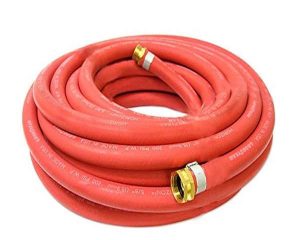
red rubber garden hose
B. PVC Garden Hoses
PVC garden hoses are a type of garden hose made from PVC material. PVC is a lightweight and flexible plastic material that is commonly used for garden hoses because it is affordable and easy to handle. PVC garden hoses are typically lighter and more flexible than rubber hoses, which makes them easier to maneuver and store.
PVC garden hoses come in a variety of lengths, diameters, and colors, and they may have different features, such as couplings, fittings, and spray nozzles. Some PVC garden hoses may also be treated with special materials, such as anti-kink or anti-UV additives, to improve their performance and longevity.
Overall, PVC garden hoses are a budget-friendly and practical option for gardeners and homeowners who need a lightweight and flexible watering solution for their outdoor areas. However, they may not be as durable or weather-resistant as rubber hoses, and they may be more prone to kinking or puncturing.
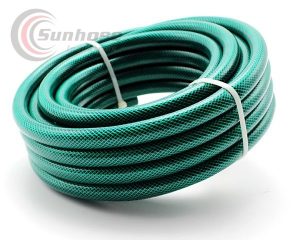
flexible garden hose
C. Expandable Garden Hoses
Expandable garden hoses are a type of garden hose that expands when filled with water and contracts when the water is drained. They are made of a combination of materials, including a flexible inner hose, a woven outer sleeve, and brass fittings.
When the expandable hose is connected to a water source and turned on, the inner hose expands as it fills with water, allowing the hose to reach its full length. When the water is turned off, the inner hose contracts back to its original compact size, making the hose easier to store.
Expandable garden hoses are lightweight, compact, and easy to handle, which makes them a popular choice for small gardens, balconies, and patios. They also come in various lengths and may have different features, such as adjustable spray nozzles and quick-connect fittings.
Overall, expandable garden hoses are a convenient and practical option for gardeners and homeowners who need a compact and lightweight watering solution for their outdoor areas. However, they may not be as durable as traditional rubber or vinyl hoses, and the inner hose may become punctured or damaged over time.
D. Comparison of different types of garden hoses
Garden hoses come in various types, including rubber, vinyl, expandable, and others, each with its own set of benefits and drawbacks. Here is a comparison of the different types of garden hoses:
-
Rubber Garden Hoses: Rubber garden hoses are durable, weather-resistant, and flexible, making them ideal for outdoor use. They are thicker than vinyl hoses and less likely to kink or puncture, but they are also heavier and more expensive.
-
Vinyl Garden Hoses: Vinyl garden hoses are lightweight and flexible, making them easy to maneuver and store. They are more affordable than rubber hoses, but they are also more prone to kinking or puncturing and may not be as weather-resistant.
-
Expandable Garden Hoses: Expandable garden hoses are compact and easy to store, but they may not be as durable as traditional rubber or vinyl hoses. They are also more prone to kinking or puncturing, especially if they are not stored properly.
-
Coil Garden Hoses: Coil garden hoses are made of a flat, coiled hose that expands when filled with water and contracts when the water is drained. They are compact, lightweight, and easy to store, but they may not be as durable as rubber or vinyl hoses.
-
Flat Garden Hoses: Flat garden hoses are made of a thin, flat hose that is easy to roll and store. They are lightweight and compact, but they may not be as durable or kink-resistant as rubber or vinyl hoses.
In conclusion, the type of garden hose you choose will depend on your specific needs and preferences, including the size of your garden, the water pressure and flow rate you need, and the climate conditions in your area. It’s important to consider the benefits and drawbacks of each type of garden hose before making a decision.
III. Benefits of Garden Hoses
A. Durability
B. Flexibility
C. Kink resistance
D. Lightweight
IV. Choosing the Right Garden Hose
A. Determining the right length
B. Considerations for choosing the right material
C. Factors to consider when choosing the right type of garden hose
V. Maintenance of Garden Hoses
A. Storing garden hoses properly
-
Drain the hose: Make sure to drain the hose completely before storing it. This will prevent any stagnant water from sitting in the hose and causing damage over time.
-
Coil the hose: Coiling the hose properly will help prevent kinks and tangles. Start at one end of the hose and coil it in a circular motion, working your way to the other end.
-
Hang the hose: If you have the space, hanging the hose on a hook or hose reel is a great way to store it. This will keep the hose off the ground and prevent it from becoming damaged or tangled.
-
Keep the hose in a cool, dry place: Exposure to heat, sunlight, and moisture can cause damage to the hose over time, so it’s best to store it in a cool, dry place when not in use.
-
Store in a hose box or container: If you don’t have the space to hang your hose, you can store it in a hose box or container. This will protect the hose from the elements and prevent it from becoming tangled or kinked.
B. Cleaning garden hoses
-
Turn off the water source: Turn off the water source that is connected to the hose before cleaning it. This will prevent water from flowing through the hose while you are cleaning it.
-
Drain the hose: Remove the nozzle and let the water drain out of the hose completely.
-
Mix a cleaning solution: Mix a solution of water and a mild detergent, such as dish soap. Use a bucket to mix the solution.
-
Clean the hose: Use a soft brush, such as a scrub brush or sponge, to clean the inside and outside of the hose. Scrub the entire length of the hose, paying special attention to any areas with dirt or buildup.
-
Rinse the hose: Rinse the hose thoroughly with clean water to remove any soap residue. Make sure to rinse both the inside and outside of the hose.
-
Hang the hose: Hang the hose to air dry in a shaded area. Do not expose the hose to direct sunlight or heat, as this can cause the hose to crack or become brittle over time.
By cleaning your garden hose regularly, you can help prevent mold and mildew growth, and keep the hose in good condition for years to come.
C. Repairing garden hoses
-
Identify the leak: Locate the source of the leak by visually inspecting the hose or by running water through the hose and looking for any areas that are wet or dripping.
-
Turn off the water source: Turn off the water source that is connected to the hose before attempting to repair it.
-
Cut out the damaged section: Use a sharp knife or scissors to cut out the section of the hose that is leaking. Make sure to cut the hose at a point that is slightly longer than the leak, so that you have enough room to make the repair.
-
Clean the ends of the hose: Use sandpaper or a wire brush to clean the ends of the hose that will be connected. This will help ensure a secure and leak-free connection.
-
Attach a hose repair kit: A garden hose repair kit typically includes a barbed fitting, a clamp, and a piece of reinforcement material. Attach the barbed fitting to one end of the hose and insert the other end of the hose into the fitting. Then, place the reinforcement material over the joint and clamp it in place with the included clamp.
-
Test the repair: Turn the water source back on and check the repaired area for any leaks. If the repair is secure, the hose should not leak at the repaired section.
By following these steps, you can repair a garden hose quickly and easily. If the leak is too large or the hose is damaged in multiple areas, it may be more cost-effective to replace the hose rather than trying to repair it.
VI. Accessories for Garden Hoses
A. Hose nozzle
A hose nozzle is a device that attaches to the end of a garden hose and controls the flow of water. Hose nozzles come in a variety of designs and styles, and can be used for a variety of tasks, such as watering plants, cleaning, and washing. They typically have a lever or knob that can be turned to adjust the water pressure, allowing for a gentle spray or a strong stream of water. Some hose nozzles also come with multiple spray patterns, such as shower, mist, and flat, which can be useful for different watering and cleaning tasks. Hose nozzles are an essential tool for any gardener or homeowner with a garden hose, and can make watering and cleaning tasks much easier and more efficient.
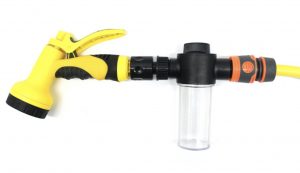
Garden hose nozzle
B. Hose reel
A hose reel is a device used to store and manage a garden hose. It typically consists of a cylindrical drum that the hose can be wound around, a mechanism for winding the hose, and a base that the reel can be mounted on or attached to. Hose reels come in a variety of sizes and designs, from small handheld models to large, wall-mounted units.
The main benefit of a hose reel is that it makes it easier to store and manage a garden hose. Rather than leaving the hose lying on the ground, where it can become tangled or damaged, a hose reel allows the hose to be neatly wound up and stored in a compact, organized manner. This can help extend the life of the hose, as well as make it easier to use the hose when needed.
In addition to making storage and management of a garden hose easier, hose reels can also be used to regulate the flow of water from the hose. Some hose reels come with a built-in nozzle or hose connector that can be used to control the water flow, making it easier to use the hose for a variety of tasks, such as watering plants, cleaning, and washing.
Overall, a hose reel is a useful tool for any gardener or homeowner with a garden hose, and can help make watering and cleaning tasks easier, as well as help extend the life of the hose.
C. Hose splitter
A hose splitter is a device that allows a single garden hose to be split into two or more separate hoses. It typically consists of a single inlet that attaches to the water source, and two or more outlets that each connect to a separate garden hose.
The main benefit of a hose splitter is that it allows multiple hoses to be used at the same time, making it easier to water multiple areas of a garden or wash multiple vehicles. This can be especially useful for homeowners or gardeners who have a large area to water, or who need to use multiple hoses for different tasks at the same time.
In addition to allowing multiple hoses to be used at the same time, hose splitters can also help regulate the water flow to each hose. Some hose splitters come with separate valves for each outlet, allowing for independent control of the water flow to each hose. This can be useful for conserving water, as well as for controlling the water flow to each hose for different tasks.
Overall, a hose splitter is a useful tool for any gardener or homeowner with a garden hose, and can help make watering and cleaning tasks easier and more efficient.
D. Hose connectors and adapters
Hose connectors and adapters are devices that are used to connect two or more garden hoses together, or to connect a garden hose to other water-related equipment, such as faucets, hose reels, and spray nozzles. They come in a variety of designs and styles, and are designed to make it easier to use and manage a garden hose.
Hose connectors typically have a female end that attaches to the end of one hose, and a male end that attaches to the end of another hose. They can be used to extend the length of a garden hose by connecting two or more hoses together, or to connect hoses to other equipment, such as hose reels and spray nozzles.
Hose adapters are similar to hose connectors, but they are designed to adapt a garden hose to a different type of connection. For example, a hose adapter might have a female end that attaches to the end of a garden hose and a male end that fits into a faucet. Hose adapters can also be used to connect hoses to different types of equipment, such as a garden spray nozzle or a hose reel.
Overall, hose connectors and adapters are useful tools for any gardener or homeowner with a garden hose, and can help make watering and cleaning tasks easier and more efficient. They can also help extend the life of a garden hose by making it easier to use and manage.
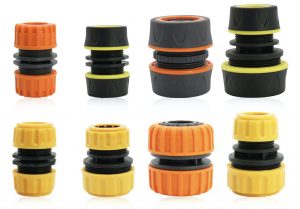
Hose connectors and adapters
VII. Conclusion
A. Recap of the importance of garden hoses
Garden hoses are an essential tool for any gardener or homeowner with a garden, lawn, or outdoor space. They provide a convenient and efficient way to water plants, wash outdoor equipment and vehicles, and perform other outdoor tasks.
The importance of garden hoses can be summarized as follows:
-
Convenience: Garden hoses allow for easy and convenient access to water for outdoor tasks, eliminating the need to carry buckets of water or use a watering can.
-
Versatility: Garden hoses come in a variety of lengths and sizes, making it easy to reach every part of a garden or lawn. They can also be used with various attachments, such as nozzles and sprayers, to perform a range of tasks, from watering delicate plants to cleaning outdoor equipment.
-
Efficient watering: Garden hoses allow for efficient watering, making it possible to water large areas of a garden or lawn in a short amount of time. They can also be used with hose timers to help conserve water and control the amount of water used for different tasks.
-
Protection: Garden hoses can help protect plants and lawns by providing a gentle and controlled flow of water, reducing the risk of damage from overwatering or improper watering techniques.
-
Durability: With proper storage and care, garden hoses can last for many years, providing a long-lasting and cost-effective solution for outdoor watering and cleaning tasks.
Overall, garden hoses are an indispensable tool for anyone with an outdoor space, and can make gardening and outdoor cleaning tasks easier, more efficient, and more enjoyable.
B. Summary of the benefits and uses of garden hoses
Garden hoses are a versatile and essential tool for any gardener or homeowner with a garden, lawn, or outdoor space. The benefits and uses of garden hoses can be summarized as follows:
-
Watering: Garden hoses are primarily used for watering plants, flowers, and lawns. They provide a convenient and efficient way to water large areas, and can be used with attachments such as nozzles and sprayers to control the flow of water and conserve water.
-
Cleaning: Garden hoses can also be used for cleaning outdoor equipment, such as cars, bicycles, and patio furniture. They can also be used for cleaning driveways, sidewalks, and other outdoor surfaces.
-
Irrigation: Garden hoses can be used for irrigation purposes, such as watering newly planted seeds or seedlings, or providing supplemental water to plants during dry spells.
-
Convenience: Garden hoses allow for easy and convenient access to water for outdoor tasks, eliminating the need to carry buckets of water or use a watering can.
-
Versatility: Garden hoses come in a variety of lengths and sizes, making it easy to reach every part of a garden or lawn. They can also be used with various attachments, such as nozzles and sprayers, to perform a range of tasks.
-
Cost-effective: With proper storage and care, garden hoses can last for many years, providing a long-lasting and cost-effective solution for outdoor watering and cleaning tasks.
C. Final thoughts and recommendations
In conclusion, garden hoses are a versatile and essential tool for any gardener or homeowner with a garden, lawn, or outdoor space. They offer a convenient and efficient way to water plants, clean outdoor equipment, and perform other outdoor tasks.
When choosing a garden hose, it’s important to consider factors such as length, diameter, material, and flexibility. A hose that is too short or too stiff can be difficult to use and manage, while a hose that is too long or too flexible can be difficult to store and can kink easily.
To extend the life of a garden hose, it’s important to store it properly when not in use, and to clean it regularly to remove dirt, debris, and mold. It’s also a good idea to inspect the hose regularly for signs of wear or damage and to replace it if necessary.
Finally, it’s recommended to use high-quality hose connectors and adapters to connect hoses to faucets, hose reels, and other water-related equipment. This can help prevent leaks and other issues that can reduce the efficiency and effectiveness of a garden hose.
In summary, a well-chosen and properly cared for garden hose can be a valuable and long-lasting tool for any gardener or homeowner with an outdoor space.

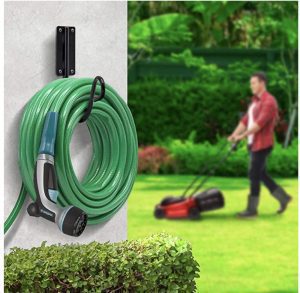
 sunhose
sunhose sunhose
sunhose